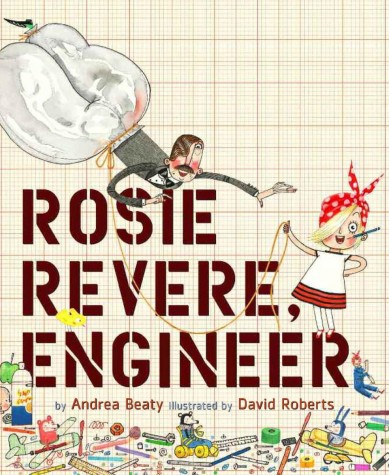 It’s been a while since we had a roundup of children’s books. So long, in fact, that the last time we had one, I wasn’t yet interested in children’s books. Now, it’s situation critical. My town has one little bookstore, and our library is accessed through several flights of dingy staircase at the back of a mall. The nearest other public library is 482 kilometers away, and it’s even smaller.
It’s been a while since we had a roundup of children’s books. So long, in fact, that the last time we had one, I wasn’t yet interested in children’s books. Now, it’s situation critical. My town has one little bookstore, and our library is accessed through several flights of dingy staircase at the back of a mall. The nearest other public library is 482 kilometers away, and it’s even smaller.
I know we’ve found the right book when a reading of it sends my 5-year-old son straight into play or reaching for a pen to design something. Here are a few of our favourites:
Rosie Revere, Engineer, by Andrea Beaty, illustrated by David Roberts
Rosie the Riveter was a feminist icon in the United States during World War II, when women took on traditionally male jobs. Our story’s heroine is her namesake and great-great-niece, who dreams of becoming a great engineer. The book celebrates experimental failure and design iteration in fantastically-illustrated, rhyming form. (Another good one by these authors: Iggy Peck, Architect)
The House That Max Built, by Maxwell Newhouse
Forget Bob the Builder. Here’s a construction book by an experienced plumbing contractor. We open on a site of great natural beauty where Max wants to build his home. Without ever losing sight of the whole project, we follow the framing crew, the bricklayers, the roofers, and the plumbers. A playful dog appears in every picture, as the electrician, the drywallers, the tile setter, floor layer, cabinetmaker, painter and landscaper ply their trades.
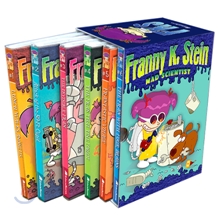 Franny K. Stein, Mad Scientist, by Jim Benton
Franny K. Stein, Mad Scientist, by Jim Benton
Chapter books – not to be confused with regular, full-length books, which also have chapters – are on the whole totally uninspiring. For a child who hasn’t yet started school, grade-school classroom hijinks are not exactly relatable, and I had started to despair in a pile of Judy Moody and Magic Treehouse blandness. Enter Franny K. Stein, the seven-book series that will have your young reader laboring through words like “philatelist”, “accordionism” and “choreography,” then asking for more.
The Story of Planet Earth (Usborne)
In the British tradition of treating children like miniature adults, Usborne takes the young reader seriously enough to give science to them straight. They linger for a daring stretch in the early universe, with a refreshing lack of exclamation marks. Dinosaurs share an equal stage with trilobites. Humans are mostly mentioned for their climate change effects.
 National Geographic Readers: Robots, by Melissa Stewart
National Geographic Readers: Robots, by Melissa Stewart
You never know what’s going to become one of those sacrosanct childhood treasures, and for some reason this glossy, throw-away reader about Robots has claimed that space in my son’s bookshelf. The cute humanoid and Aibo-style robots are balanced out with everyday practical robotics examples.
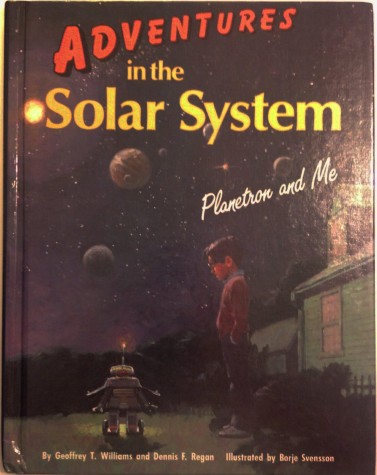 Adventures in the Solar System: Planetron and Me, by Geoffrey Williams
Adventures in the Solar System: Planetron and Me, by Geoffrey Williams
A golden oldie (1986), Planetron puts a credible narrative on a cold topic. A young boy and a friendly spaceship tour the planets, moons and asteroids. It’s a long read and a little data-heavy, and I found the onboard computer mildly annoying, but I’m not the audience that matters – Planetron’s appeal proves itself in measures of attention span and repeat requests. Apparently there also exists a sequel – adventures beyond the solar system – which I plan to track down.
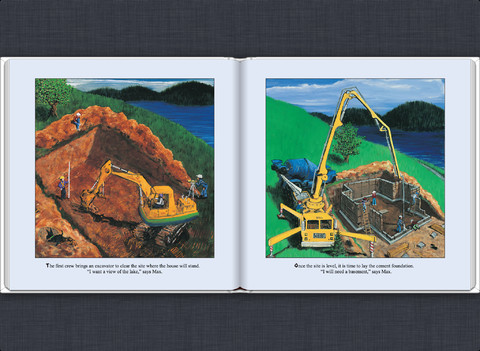
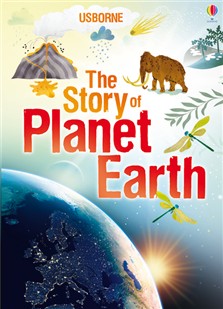
Great ideas – thanks, Jessa!
If you can stand Amazon, the used prices start at 0.01 (plus way too much money for shipping): http://www.amazon.com/Adventures-Beyond-System-Geoffrey-Williams/dp/0977138151
Or 1.95 on iTunes (which you can usually read on non-Apple gear, I think): https://itunes.apple.com/us/audiobook/adventures-beyond-solar-system/id369498246
iTunes says Williams also wrote about dinosaurs and Mars, which, gonzo!
Thanks, Jessa! We love Iggy Peck, I didn’t realized there was another!